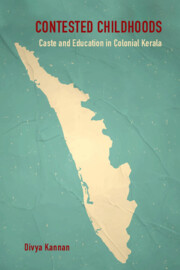2 - Saving Girls, Saving Souls
Published online by Cambridge University Press: 28 November 2024
Summary
Before Enid Blyton's stories about picturesque girls’ residential schools entered the Indian literary market, colonial boarding schools, with their distinctive architectural form and curriculum, held a unique place in the educational landscape. We can discern three kinds of boarding schools during this period, identifiable by the geographies in which they were located and the social character of their pupils, but essentially, as Satadru Sen notes, ‘paralysed by an articulation of difference that implied that native children were essentially small, perverse adults’. As with early European military-style institutions, the boarding schools established by Catholic and Protestant missionary societies and the British colonial administration had strict timetables, corporal punishment, and physical and intellectual training aligned with specified educational goals regarding children's capacities and futures.
First, the boarding schools established during the 1870s mainly catered to children of royal parentage in many parts of India, aimed at training them (mainly boys) in habits and codes of behaviour befitting their status. Located in remote locations, these schools were immersed in a curriculum aligned with those similar to British public schools, which included horse riding, classical languages, and military training, among other subjects. In this way, imperial administrators considered young sons of princely rulers, enveloped in colonial discourses of effeminacy, to be removed from their immediate surroundings to soften any propensity to rebel against their imperial masters. The second type of boarding school, known as Lawrence Military Asylums and based in the cooler climes of hill stations, was designed to educate and train mainly children of British soldiers serving in the subcontinent and reluctantly admitted a handful of children of mixed-race descent. In the tropical heat, these schools served as enclaves amid constant anxieties about racial miscegenation. This chapter analyses the third type, the oldest, most modestly resourced charity boarding schools run by Christian missionary organizations that offered education to orphaned, destitute, famine-stricken, runaway, and poor Indian children in villages and towns since the 1830s. Often, orphans presented ‘a problem of governance’, resulting in sharp disagreements over financial management and the kind and duration of instruction these pupils should receive.
- Type
- Chapter
- Information
- Contested ChildhoodsCaste and Education in Colonial Kerala, pp. 79 - 123Publisher: Cambridge University PressPrint publication year: 2025

